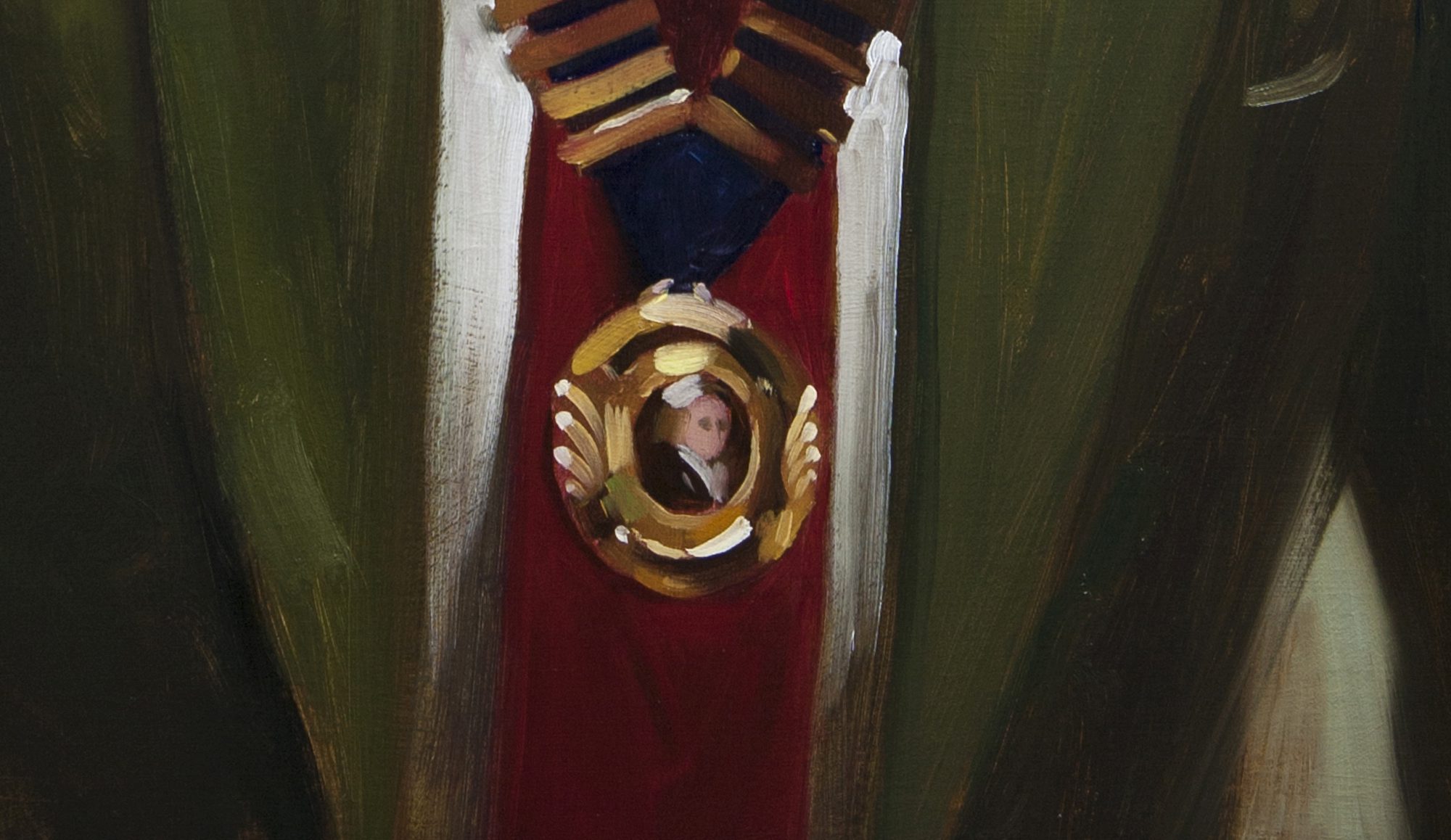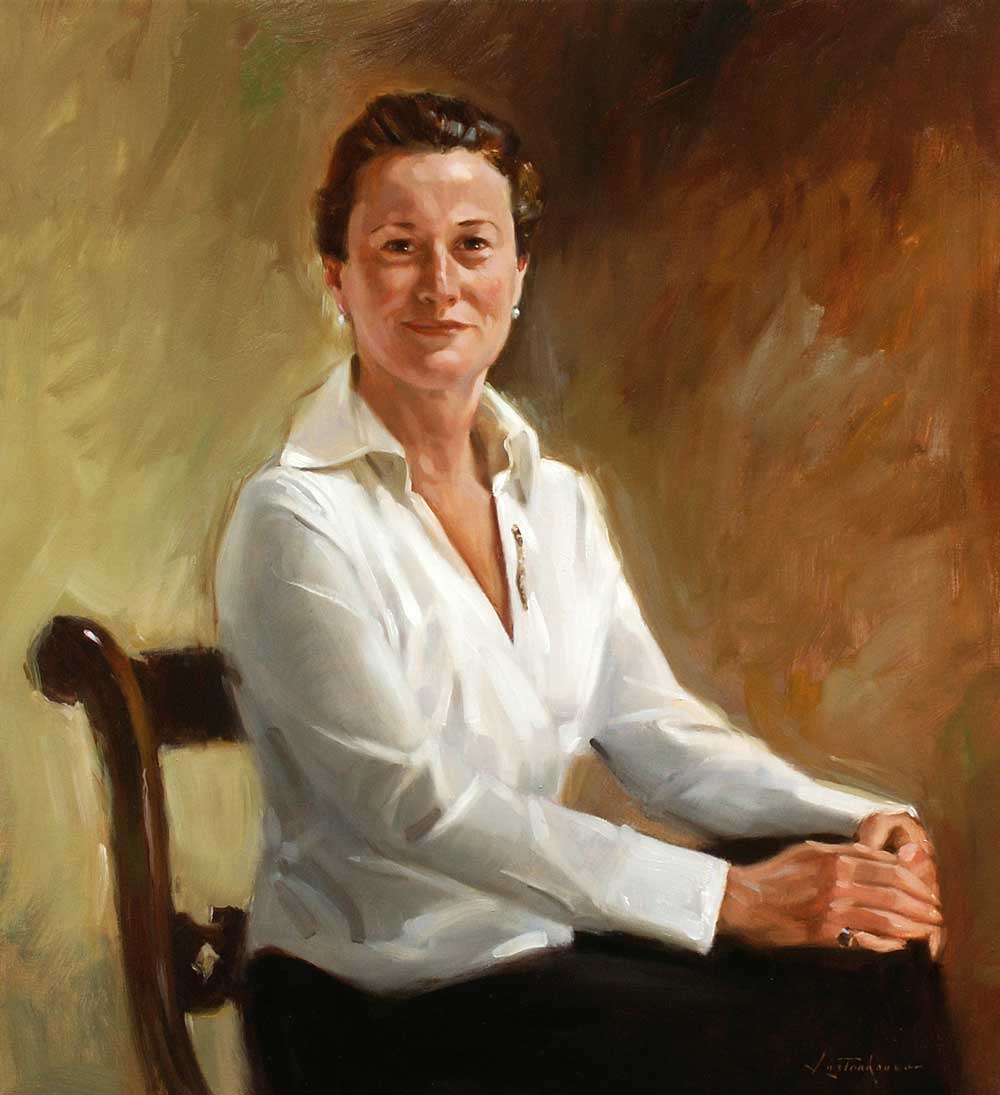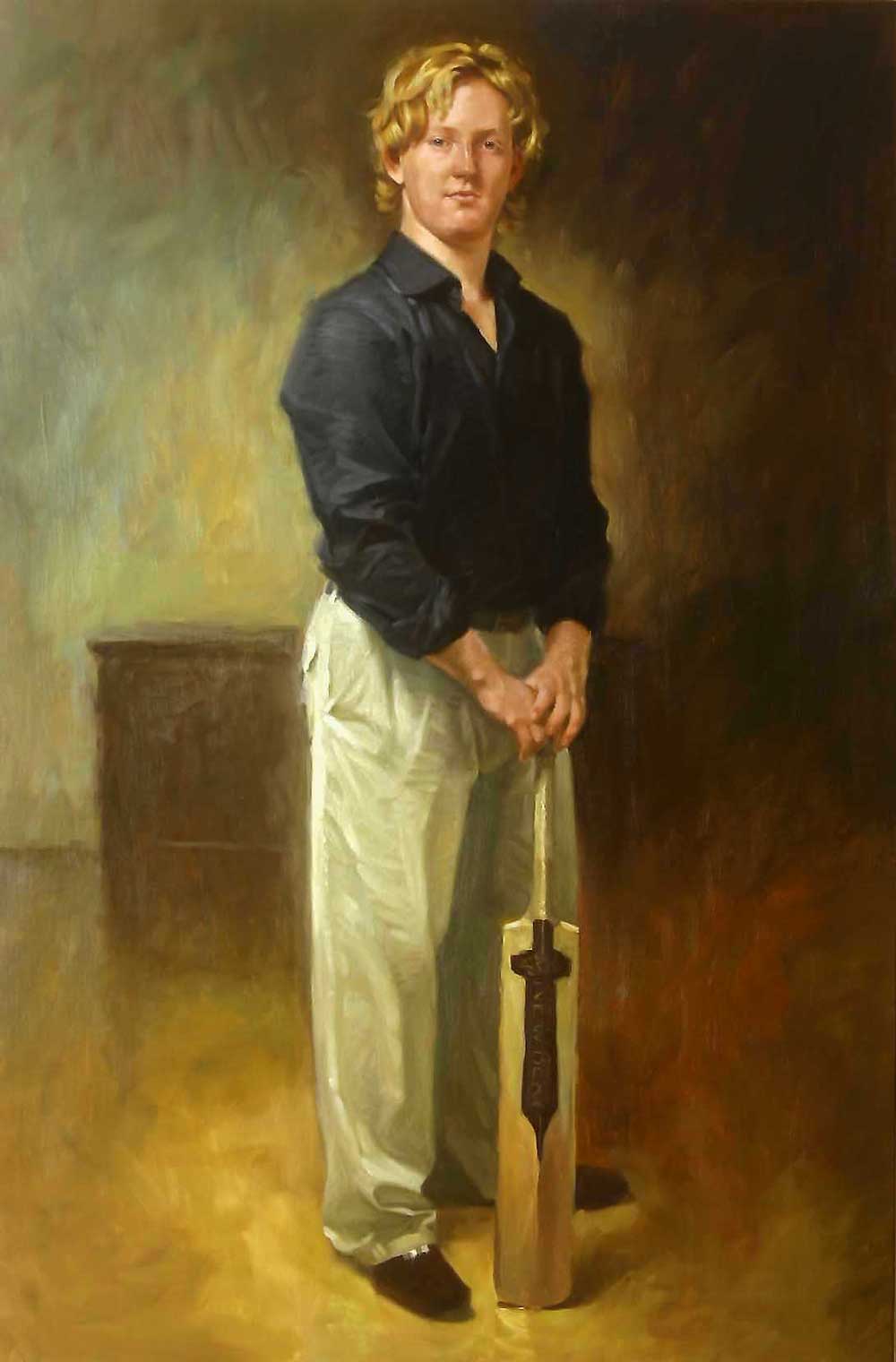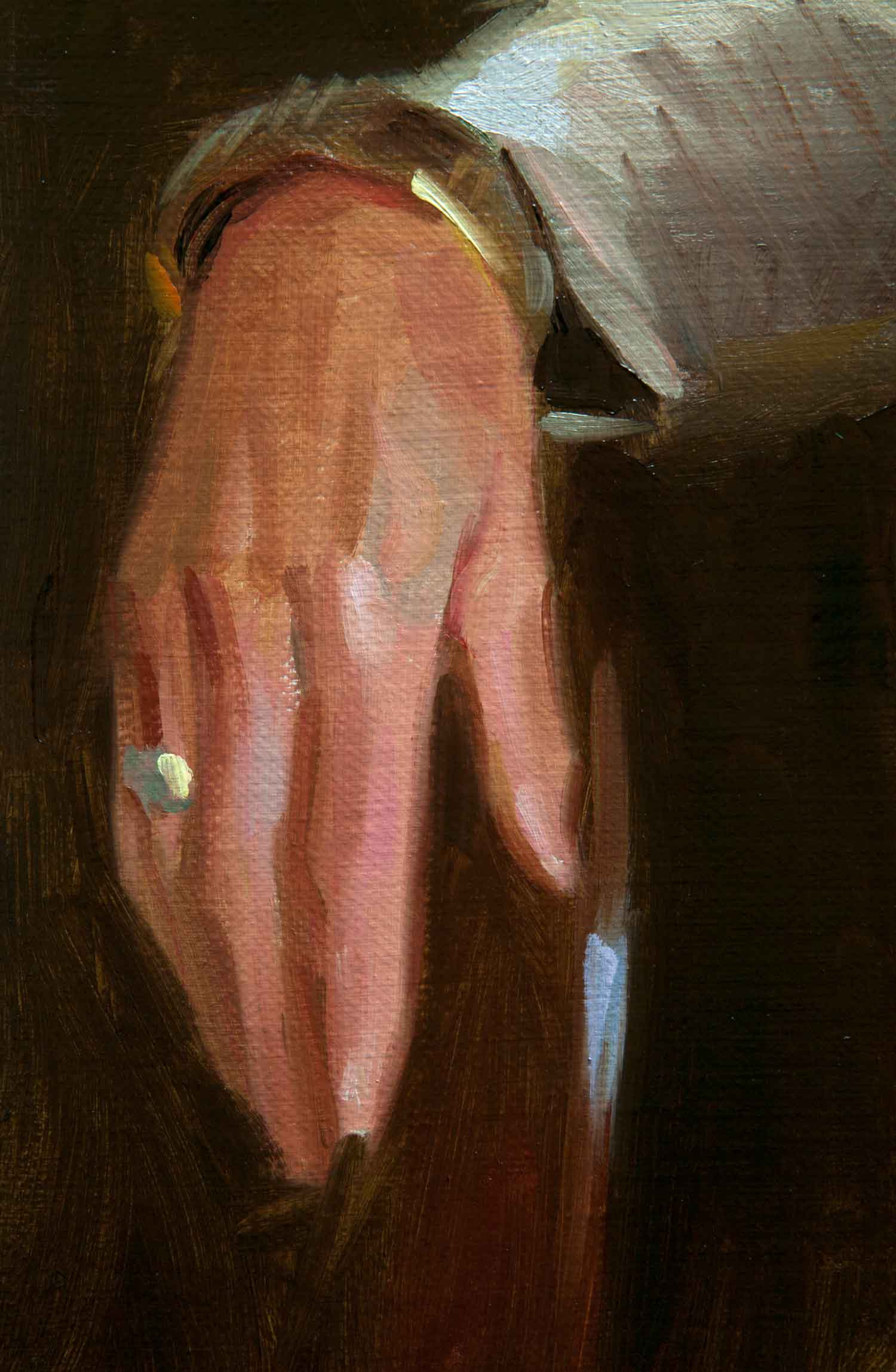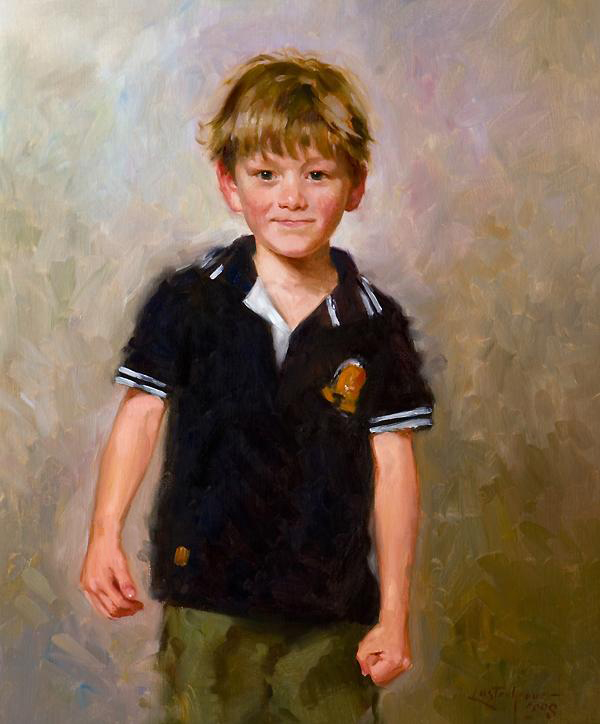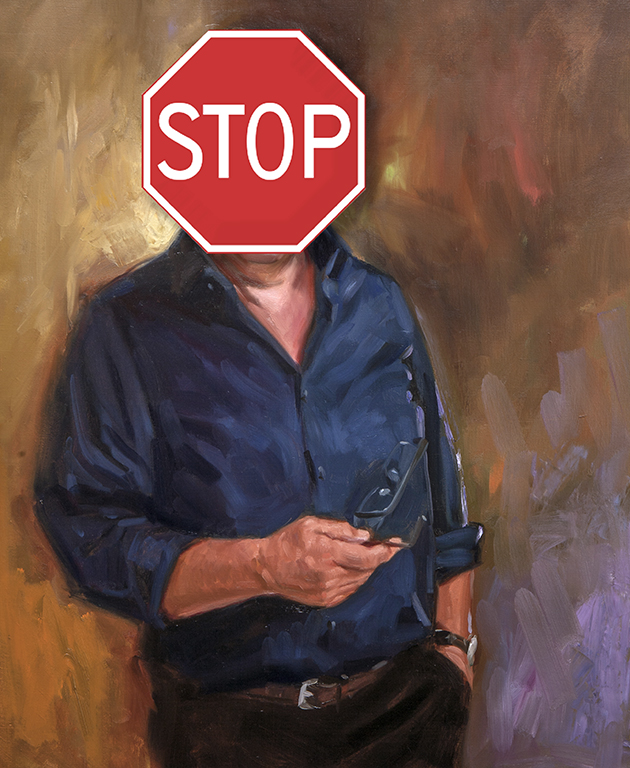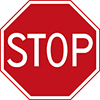‘What subject do you prefer?’ A frequent question. Actually I don´t know what to answer. Do I prefer official-portraits? Each portrait is fun to do whether it is a small child or an old lady, a professor or a lawyer. It is true that some faces are more attractive than others. A commissioned portrait never leaves me a choice and it is always exciting to see what model will appear. The same goes for official portraits. Continue reading “Official-portraits”
Portrait commissions from the old days
Looking back on some of my portrait commissions from the old days, I sometimes do with trepidation and mixed feelings. More than once it just happens that I´am no longer completely satisfied. These works I will not show you of course, haha! But occasionally I see something and I think: Not that bad.
Painting hands in oil paint
About painting hands in oil paint.
Let me start with a quote of the famous Art teacher Robert Henri form his book The Art Spirit:
“Better paint the gesture of the hand than the hand”.
I love to paint hands and this fantastic phrase animates me once again to show the expression of the hand.
Painting hands in oil paint. Many people think that a painted portrait is just only about the face. Of course it is more than that. Hands can belong just as well to the whole image. Hereto the hands of a commission that I have on my easel now. When the portrait is delivered, and I have the permission of the client, I’ll show you the whole painting. Continue reading “Painting hands in oil paint”
Portraits of Children
This week I was asked in an interview, whether I prefer to do portraits of men, women or children. I replied that I rather like to portray older people. The more wrinkles, the better. A young woman is often difficult to do because you can easily mess up a flawless face with some bad brushstrokes. Teenagers can become upset by how old or young they may appear. Middle aged people sometimes can be boring.
Satisfactory deliveries of some commissions
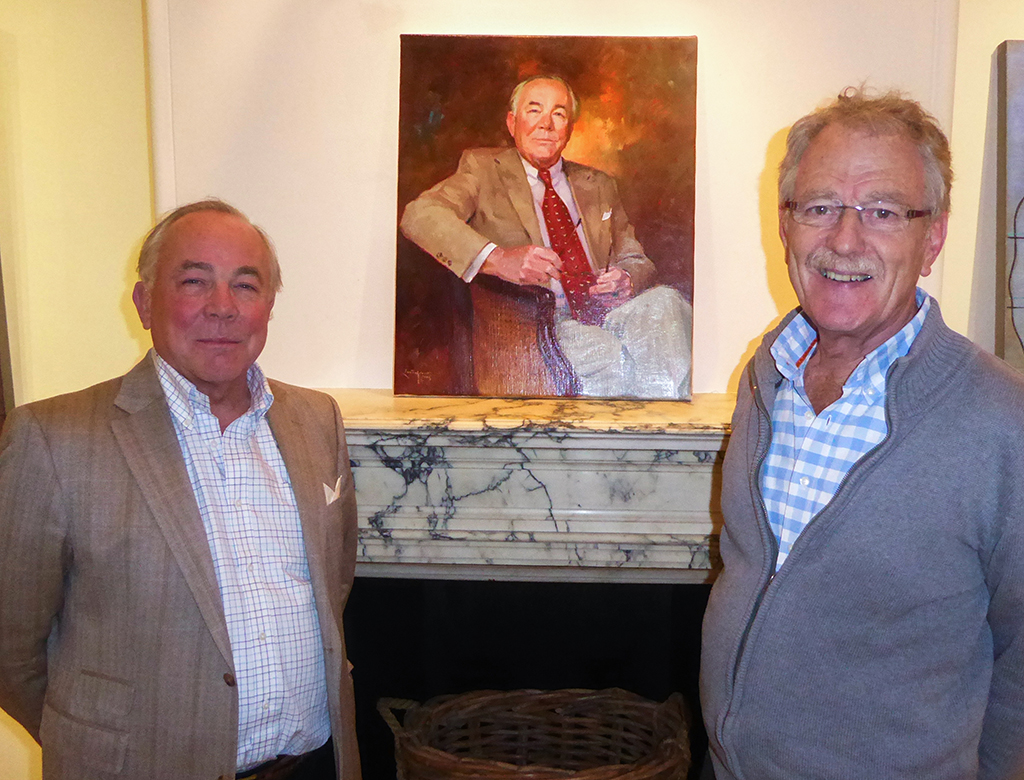
The delivery of a portrait. After all these years, I am used to it. For the client, however, it´s a special moment. This time, transfer was in Amsterdam at Galerie Morren, who mediated this commission. In addition to the customer and his wife, a number of family members were also present. There was good wine and delicious snacks: portrait delivery is always a party. Continue reading “Satisfactory deliveries of some commissions”
A failed portrait?
Rarely an artist wants to talk about it and certainly not show it : A failed job. You would rather share a glorious victory, than admit your loss. Even though you’re a successful painter, every so often it happens that you might get stuck. With non-commissioned work it does not necessarily have to lead to a problem, but when it comes to a commission it surely does. The client expects a top performance from you. I assume that you yourself are many times more critical than the client. (If not, you need to seriously doubt your artistic attitude).
I speak from experience: failing is more common than you might think. I wrote recently about this and I come back to it because it is an important fact. Why? I am convinced that you learn more from your failures than from your successes. What do you do in such a case?
Don´t keep muddling on and painting like a headless chicken, hoping that the problem will correct itself with a fluke. Lay down your brushes and stop.
Don´t panic; analyze the failure.
- Was I in good mental shape?
- Were my materials in good condition: paint, canvas, brushes?
- Was I suitably equipped for the job?
- Did I started on time?
- Was my palette set up well?
- Was I using the right colours?
- Etc
- Etc
- Etc
- Etc
My statement for this week: You always feel as good or bad as your last painting.
Where are the gouache strokes?
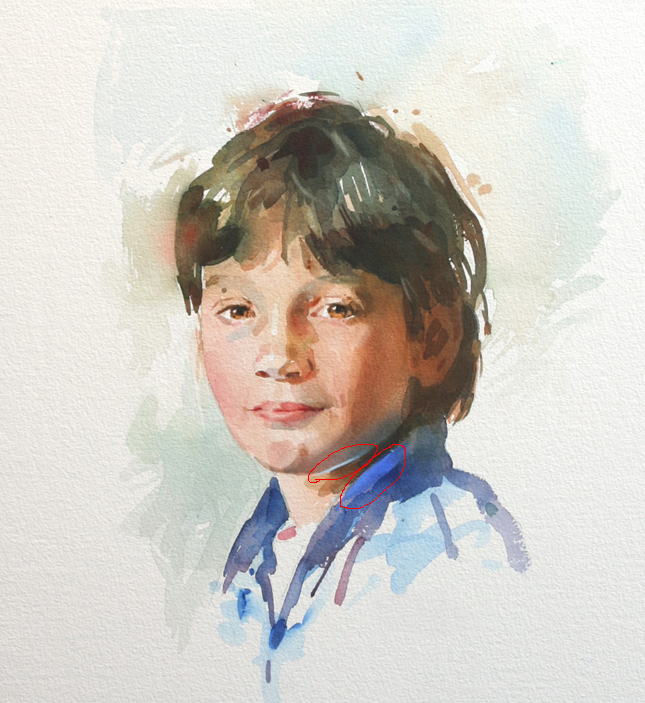
The answer to my question of two weeks ago, where in this watercolour portrait I applied two gouache strokes, is this: the bright reflected light under the chin and the blue accent on the collar of the shirt. Among the good answers I raffeld a DVD.
The DVD goes to:
Marija Gaspar from Zagreb. Congratulations Marija!
Thank you all for your participation.
Eternal gaze
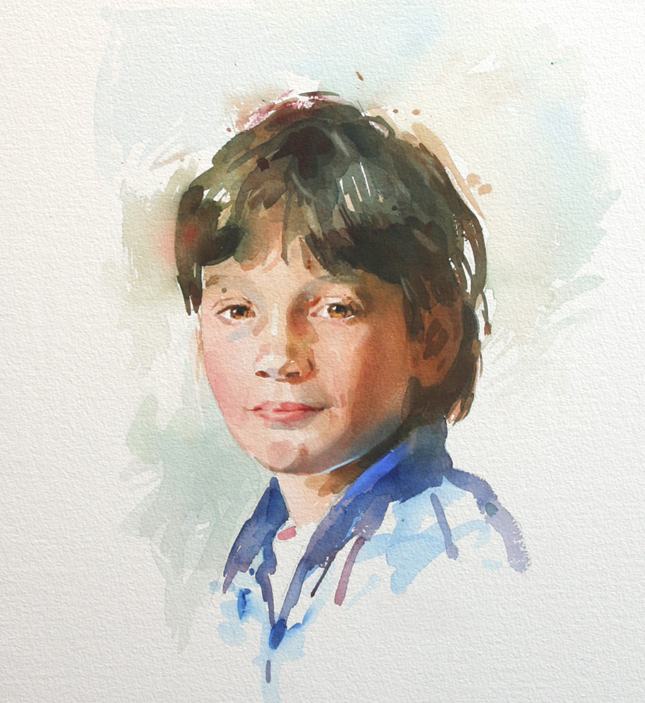
This is a commissioned portrait in watercolour that I made years ago. During the sitting I noticed the independent and tranquil look of this little boy.
“An artist is not a psychologist,” I quoted in one of my last posts. Yet a portrait painter is happy if he sees a quality in a face he wants to emphasize. So was I and I tried to capture this pensive look. I was sincerely happy when the mother exclaimed: “Yes, this is my son with his eternal gaze!“.
The portrait is in watercolour but there are two brushstrokes in gouache. I wonder if someone can find them? Among those who give the right answer I will raffle a video demonstration. Let’s say up to a fortnight.
Paint what you see
Paul C. Burns says: “An artist is a visual recorder of facts, not a psychologist probing the sitter’s self.” I largely agree with him. Paint what you see before you. Still, I find it important to know something of the character of the model. It can help whilst posing. Posing is an interaction between the sitter and I. A model feels more at ease when I am patient and sympathetic. My attitude must be inviting. Only then can we create something good. In the end a model should give me something that I can give back in the portrait.
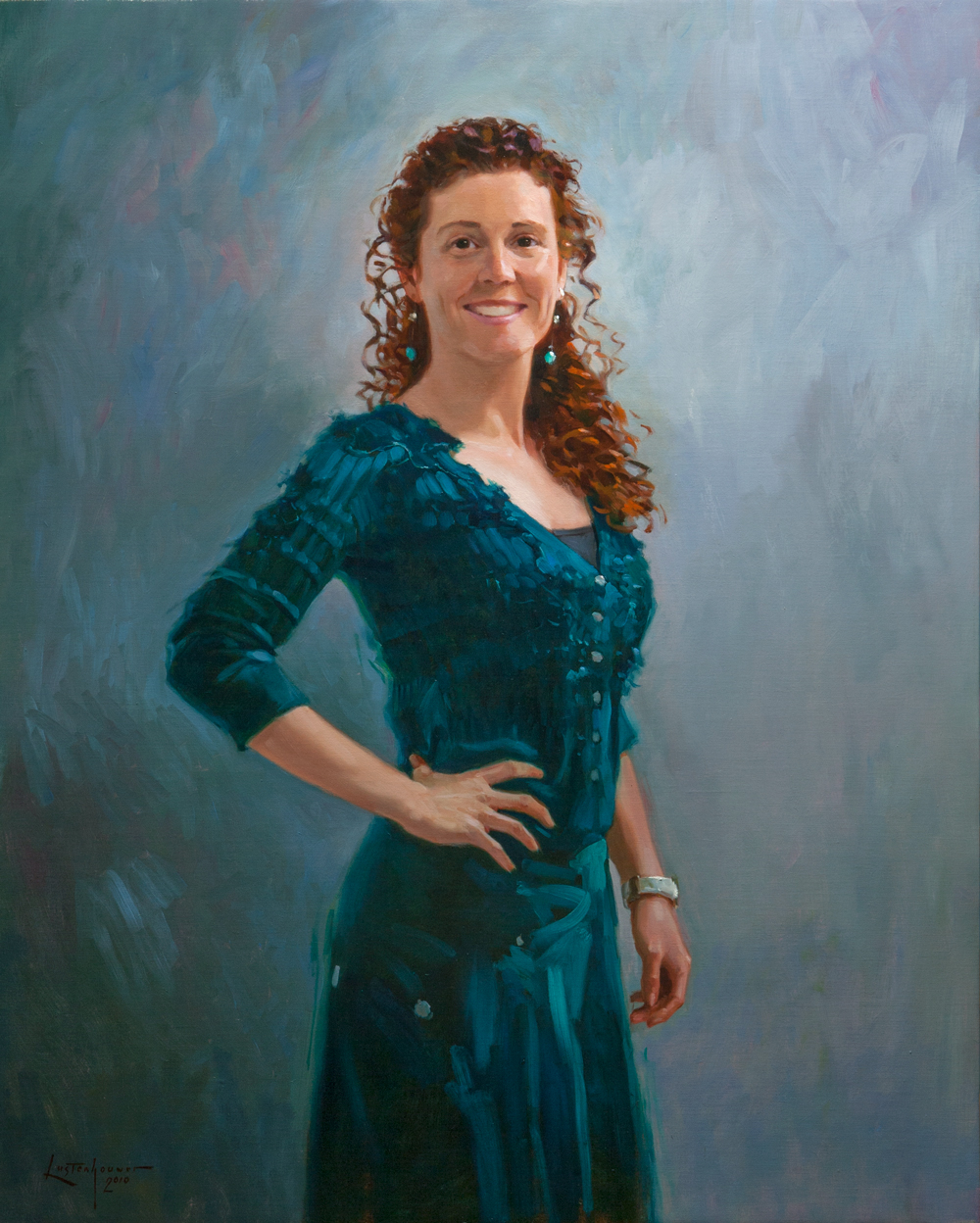
The model in this image I know well and I know her character. She is energetic and vigorous. I suppose that it has become visible. In my enthusiasm however I overlooked a small detail. I now see that the fingers of her right hand are spread too wide. The model’s energy and vigor has therefore become a little too exaggerated.
There is always a detail that you would like to change when you look back on your own work.
Portrait commissions and despair
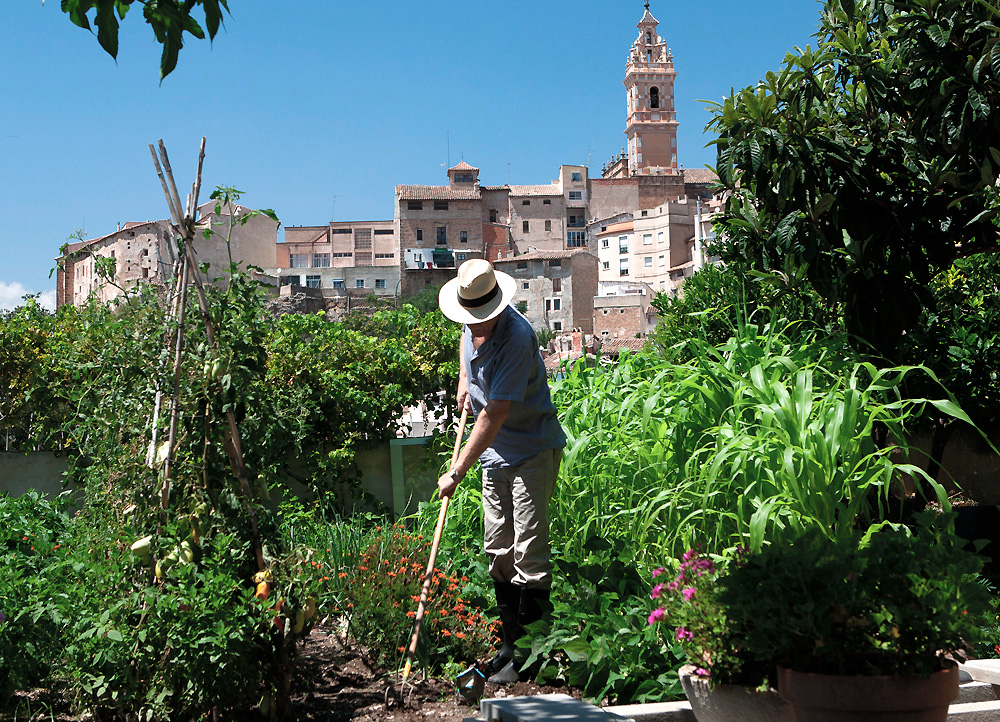
Portrait painting is my daily job. But don´t think that everything always runs smoothly for me. It sometimes happens to me that a portrait fails. In the case of a commission it is a big problem. Of course over the years I have developed a routine wherein I, step by step, can detect a possible problem and fix it. Needless to say, that belongs to my profession. But sometimes it happens that I desperately wonder how to proceed when I find my self in deep trouble.
Once I was in such despair that I decided to destroy the portrait on my easel. Eventually I realized that that was ridiculous. After a while I decided to start over again the next day. I went into the garden to work and have some distraction. Then, when I came back in my studio, I saw the abortive work on the easel. As the painting already was screwed up I decided, I could just haphazardly do some muddling.
And what was the result? In fifteen minutes the portrait was back on track and after an hour it was finished! I was satisfied and later certainly the customer was.
What now is the essence of my story? (Evident of course): If you tend to get stuck do not despair but take distance and relax. The solution may be within reach, but you don´t see it because you’re so wired up.
Sheer willpower can sometimes be destructive!
